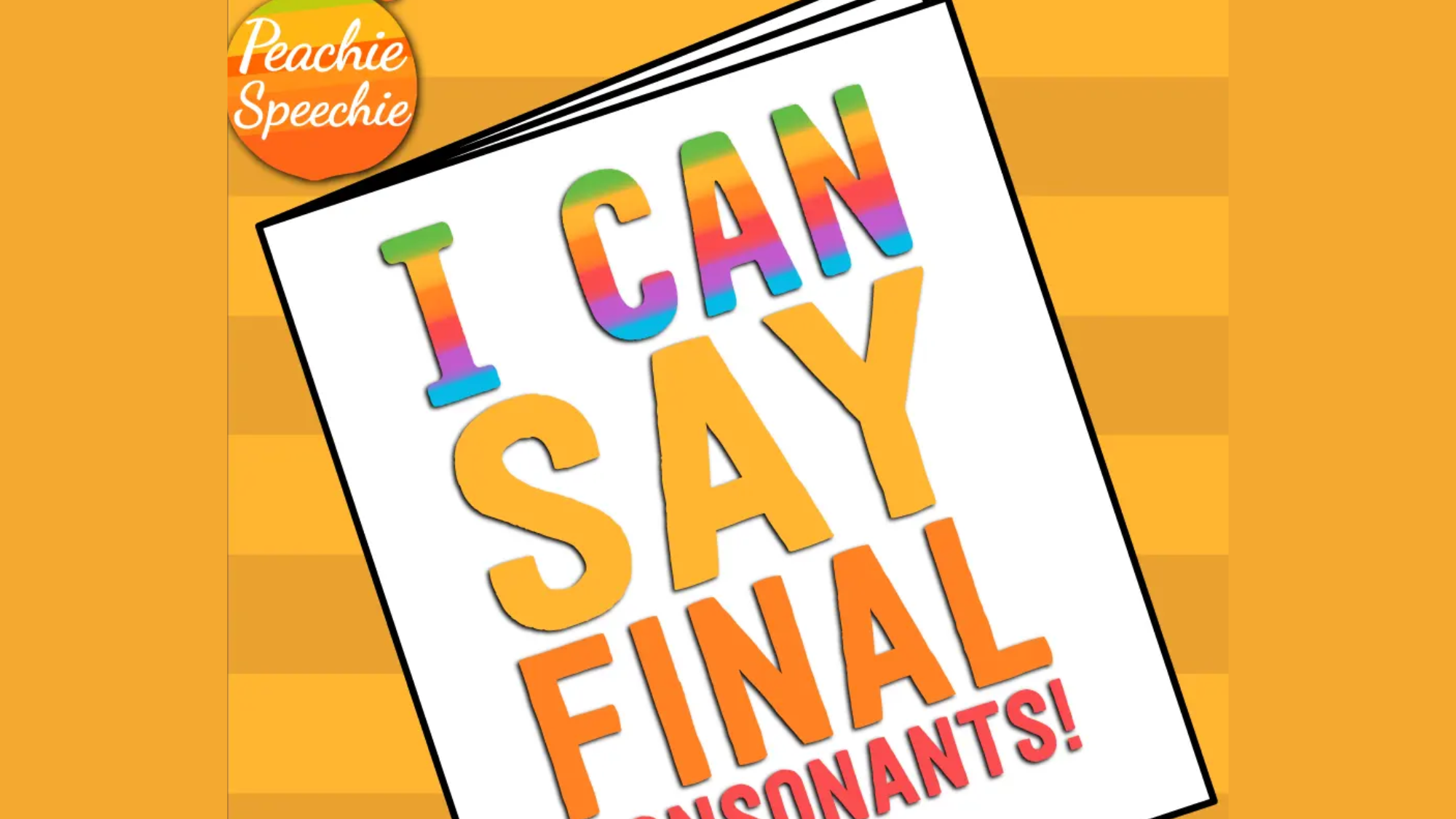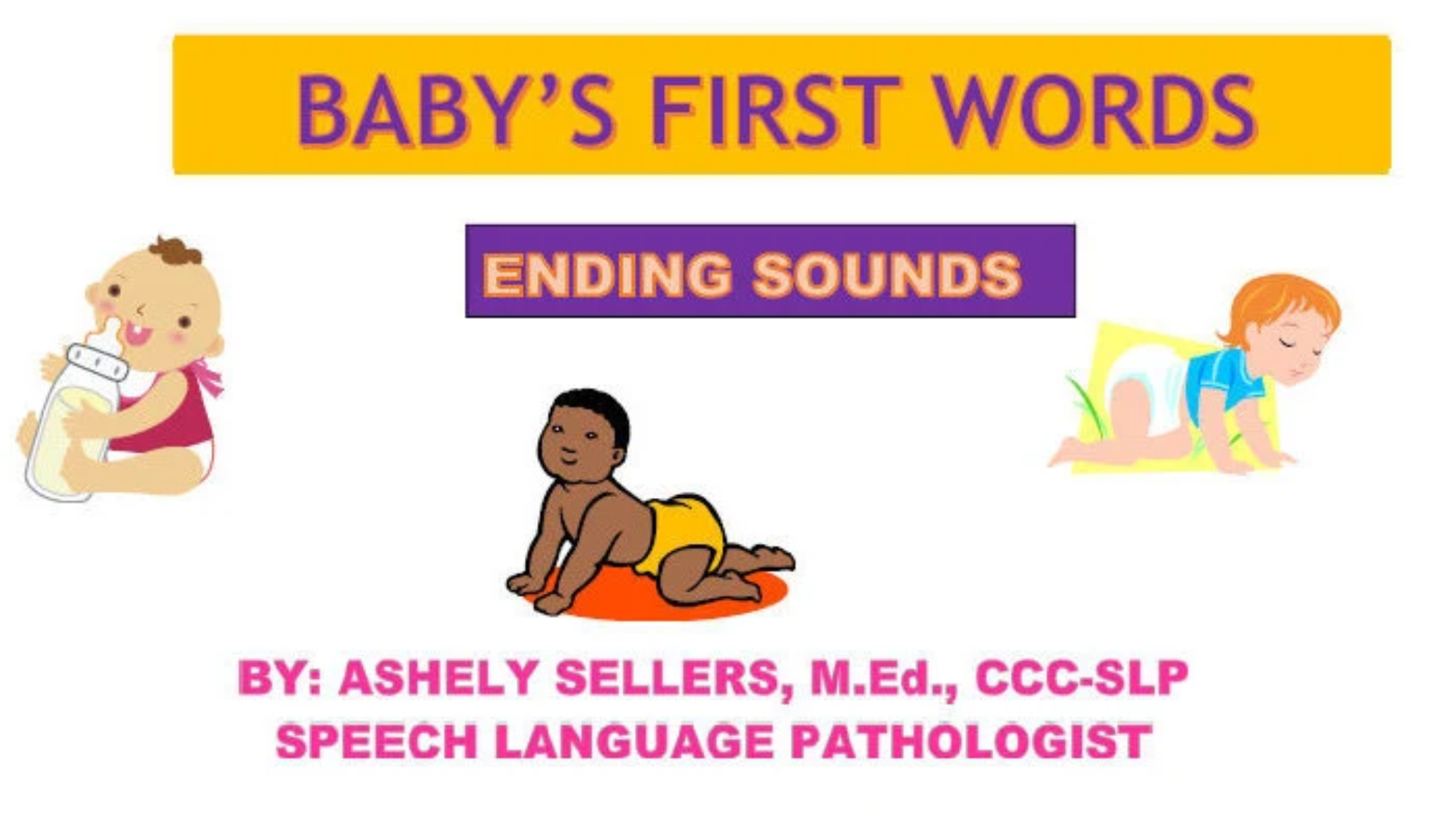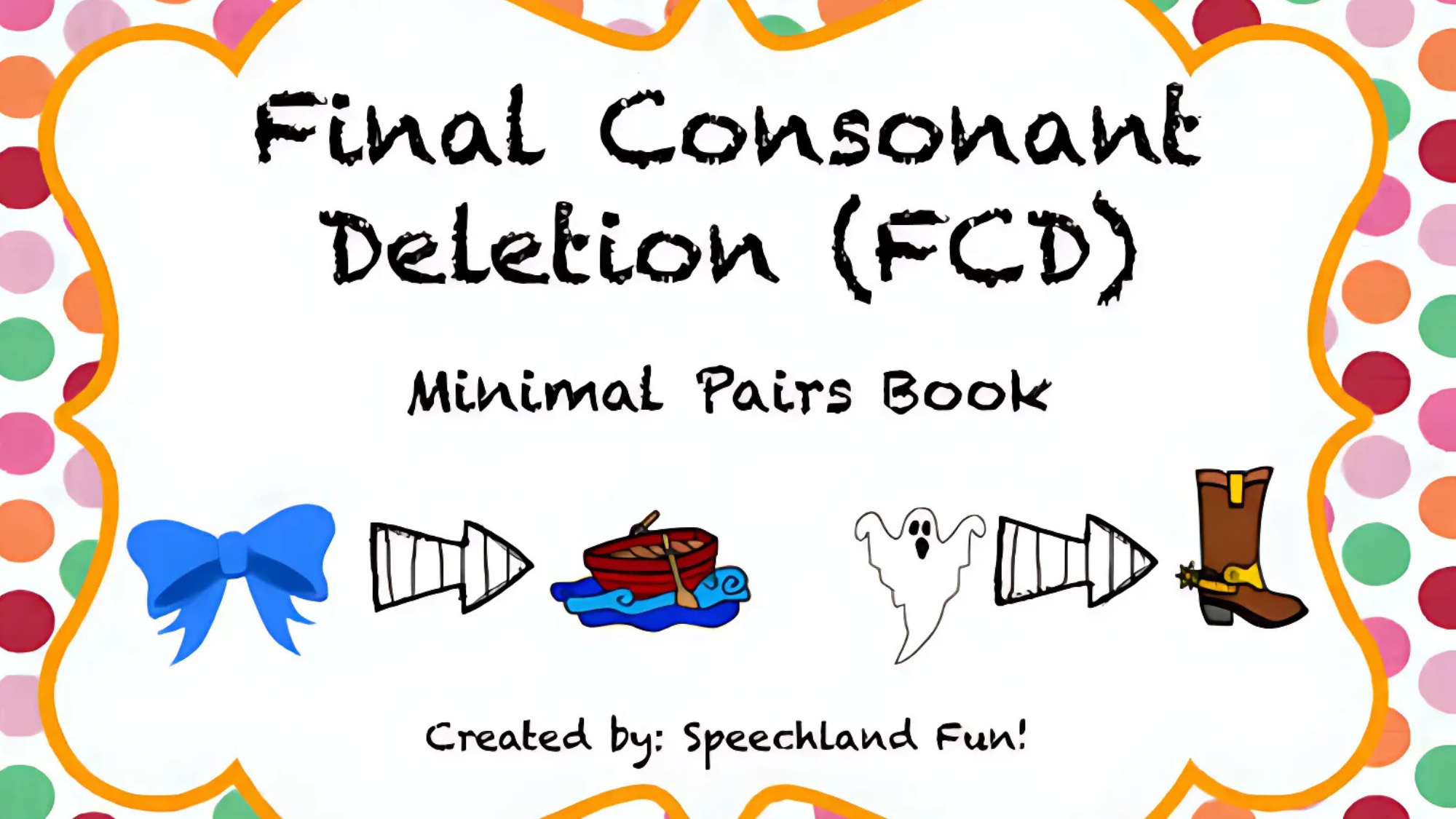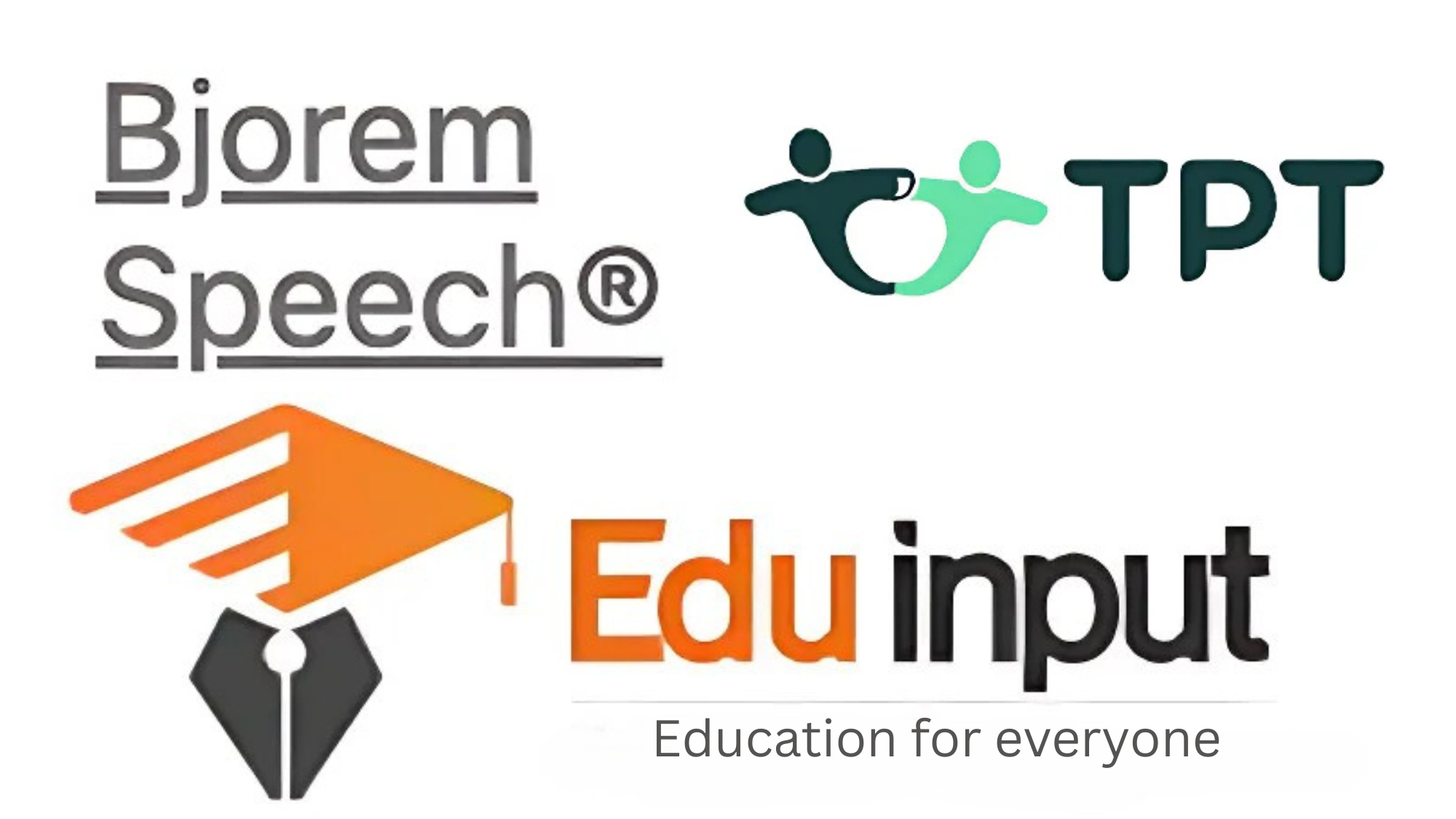What is Final Consonant Deletion? Learn with Fun Resources

Have you noticed your child saying “ca” instead of “cat” or “do” instead of “dog”? This common speech pattern, known as final consonant deletion, occurs when children consistently drop the final sounds of words.
Final consonant deletion is a normal part of early speech development, but when it persists beyond the typical age range, it can impact a child’s clarity and communication effectiveness.
Addressing final consonant deletion is crucial in speech therapy because these ending sounds carry important grammatical information and help distinguish between different words and meanings.
This guide offers educational materials, practical articles, and detailed lists to support both speech therapists and parents in effectively addressing final consonant deletion.
What is Final Consonant Deletion?
Final consonant deletion is a phonological process where children consistently omit or drop the ending consonant sounds from words during speech.
Instead of producing complete words like “cat,” “dog,” or “book,” children with final consonant deletion will say “ca,” “do,” or “boo.”
The deletion typically occurs regardless of the specific consonant sound, meaning children may drop different types of ending sounds across their vocabulary.
This process can make speech difficult to understand, especially when the missing final consonant changes the meaning of words or affects grammatical markers like plural forms or past tense endings.
Why It Happens
Final consonant deletion occurs as part of typical phonological development because producing ending sounds requires more complex motor planning and coordination than beginning sounds.
Young children naturally focus on the stressed, prominent parts of words, which are usually the initial sounds and vowels.
From a developmental perspective, final consonant deletion is normal and expected in children under 3 years old, as their speech motor skills and phonological awareness are still developing.
Children may also delete final consonants because ending sounds are often softer and less salient than beginning sounds, making them harder to perceive and reproduce.
Signs That a Child May Have Final Consonant Deletion
Recognizing the signs of final consonant deletion helps parents and professionals identify when intervention may be needed for more transparent communication.
Common Symptoms of FCD
These observable patterns indicate when a child may be consistently dropping final consonant sounds from their speech.
- Child consistently says “ca” instead of “cat,” “ba” instead of “bat,” or “cu” instead of “cup”
- Ending sounds are missing from most words, making speech difficult to understand
- Child may produce the beginning and middle parts of words clearly but drops final consonants
- Plural forms become unclear, saying “toy” instead of “toys” or “book” instead of “books”
- Past tense markers disappear, saying “walk” instead of “walked” or “jump” instead of “jumped”
- Speech clarity decreases significantly due to missing word endings
- Child may demonstrate frustration when others don’t understand their speech
- Final consonants are omitted across different sound types (stops, fricatives, nasals)
Books for Addressing Final Consonant Deletion
Books designed for final consonant deletion provide structured activities that engage children in correcting final consonant production.
1. “I Can Say Final Consonants: Speech Therapy Workbook” by Peachie Speechie

This workbook is an excellent tool for speech therapists and parents looking to help children correct final consonant deletion.
It offers a step-by-step guide with fun, engaging exercises such as “Say It, Draw It,” “Dot the Ending Sound,” and others that target the production of final consonants.
2. “Baby’s First Words: Final Consonant Deletion” by SpeechLanguageBeyond

Aimed at toddlers and preschoolers, this book uses interactive activities to target final consonant deletion.
Each exercise helps children work on producing consonant sounds such as /b/, /p/, /m/, /n/, /k/, and /g/ by practicing words, phrases, and short sentences. The goal is to improve both auditory discrimination and speech clarity.
3. “Final Consonant Deletion Minimal Pairs Book” by Speech Land Fun

This book focuses on minimal pairs, a proven technique in phonology therapy, where words differ by only one sound, such as “cap” vs. “cat.”
It offers a structured way for children to practice distinguishing between words with and without final consonant sounds. The minimal pair approach encourages clear differentiation between word pairs, which helps children produce the final consonant in words correctly.
Flashcards and Visual Aids
Flashcards and visual aids offer practical, engaging ways to help children practice final consonant sounds in a visual format.

1. Bjorem Speech® Final Consonant Deletion Deck
This set of flashcards is designed to help children who struggle with final consonant deletion by offering clear images paired with words that emphasize the final consonant sound.
The flashcards provide visual reinforcement, making it easier for children to connect the spoken word with its corresponding visual cue.
2. Final Consonant Deletion Worksheets by Eduinput
These worksheets are a great way to practice final consonant deletion through a series of activities. Children will match words with and without final consonants, helping them visually and audibly distinguish between the two.
The worksheets are designed to reinforce proper pronunciation and articulation skills, making them an essential tool for parents and therapists alike.
3. Final Consonant Deletion Flipbook by The Dabbling Speechie
The flipbook is a hands-on, interactive tool that provides a fun way for children to practice final consonant sounds. With its easy-to-follow structure, children can flip through various word examples, making the practice session both engaging and educational.
The flipbook is perfect for targeting final consonant sounds in a manner that keeps children motivated while helping them improve their speech clarity.
List of Final Consonant Deletion Words
These websites give lists of words that children might simplify by omitting the final consonant, a typical developmental process in early language acquisition.

1. Final Consonant Deletion Speech Activity | Therapy Source
The activity includes 20 pages featuring minimal pair word sets; pairs of words that differ by only one sound, such as “bee” vs. “beep.”
Each page presents two images: one depicting a word with a final consonant and the other without. The goal is to help students understand how the presence or absence of a final consonant changes the meaning of a word.
2. Free SLP
Offers a comprehensive collection of free resources designed to assist Speech-Language Pathologists (SLPs), educators, and parents in addressing final consonant deletion (FCD) in children’s speech.
These materials are suitable for various settings, including in-person therapy, virtual sessions, and home practice.
3. Fun Early Learning
The PDF provides a list of minimal pairs; pairs of words that differ by only one sound, such as “row” and “road.”
Each pair includes an “open” word ending in a vowel and a “closed” word ending in a consonant. For instance, “row” becomes “road” with the addition of the consonant “d.”
Additional Articles to Learn More
Read these insightful articles to deepen your understanding of final consonant deletion and know effective strategies for speech therapy and support.
-
Speech and Language Kids – Final Consonant Deletion
This article explains what final consonant deletion is, why it happens, and how to treat it in speech therapy. It provides examples and strategies for speech therapists and parents to use. -
Lessons in Speech – Phonological Process of Final Consonant Deletion: Easy Guide for Parents
This article is parent-friendly and explains final consonant deletion, how to spot it, and how parents can help their child practice final consonant sounds at home. -
MD Searchlight – Helping Your Child with Final Consonant Deletion
This piece offers advice for parents on when to be concerned about final consonant deletion, how to help children who struggle with it, and how therapy can support the child’s progress. -
The Dabbling Speechie – Final Consonant Deletion and Minimal Pairs
A great resource that discusses final consonant deletion and provides practical tips on using minimal pairs for therapy.
How to Support Children with FCD at Home
Parents play a crucial role in helping children overcome final consonant deletion through consistent practice and supportive interaction.
Parent Involvement Tips
Simple home activities can significantly accelerate progress when parents incorporate final consonant practice into daily routines and play.
- Read books together and emphasize ending sounds by stretching out final consonants in words
- Play “I Spy” games focusing on objects that end with specific consonant sounds
- Use mirror play to help children see mouth movements when producing final consonants
- Create silly songs or rhymes that highlight words with and without ending sounds
- Practice during mealtime by naming foods and emphasizing their final consonants
- Turn car rides into speech practice time by playing word games with ending sounds
- Use bath time to practice with foam letters, placing consonants at the end of words
- Make final consonant practice part of bedtime routines through storytelling and word games
Consistency is Key
Regular, consistent practice creates lasting improvements in speech clarity and builds children’s confidence in communication.
- Establishing daily practice sessions of 10-15 minutes proves more effective than long, infrequent sessions.
- Practicing the same target words across multiple activities throughout the day reinforces learning and builds automaticity.
- Keeping practice fun and engaging maintains your child’s motivation and interest in improving their speech.
- Working closely with your child’s speech therapist ensures home practice aligns with therapy goals and maximizes progress.
Conclusion
Addressing final consonant deletion early prevents communication difficulties and lays a strong foundation for clear speech development.
When children master ending sounds, they gain confidence in their ability to communicate effectively, which in turn leads to improved social interactions and academic success.
The materials, exercises, and resources provided in this guide offer practical strategies that make speech practice engaging and effective for children at every developmental stage.
Start implementing these strategies today and watch your child’s speech clarity improve while building stronger connections through successful communication experiences.






